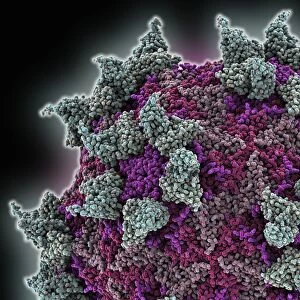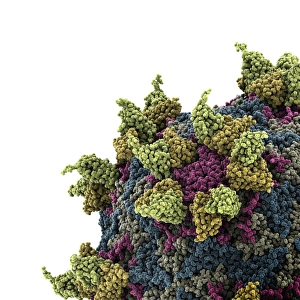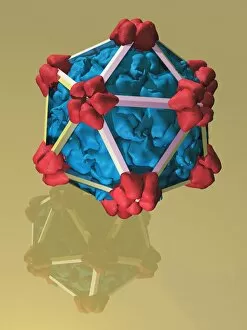Protein Capsid Collection
Protein capsids are the protective shells that encase viruses, playing a crucial role in their survival and replication
All Professionally Made to Order for Quick Shipping
Protein capsids are the protective shells that encase viruses, playing a crucial role in their survival and replication. These intricate structures have captivated scientists for decades, as they hold the key to understanding viral behavior and developing effective treatments. One example of a protein capsid is found in the Rhinovirus, which causes the common cold. When this virus enters our body, it encounters antibodies that recognize its protein capsid as foreign. The interaction between the Rhinovirus and antibody is like a molecular dance, with each trying to outsmart the other. In molecular models C015/7139 and C015/7138, we get an up-close look at these interactions. The complex interplay between the Rhinovirus's protein capsid and antibodies reveals fascinating details about how our immune system fights off infections. Another intriguing example is seen in Satellite Tobacco Necrosis Virus (STNV). This small RNA virus has a unique protein capsid structure represented by model C014/0005. STNV's protein shell not only protects its genetic material but also allows it to infect plants by hijacking their cellular machinery. The Norwalk virus particle is another captivating subject within the realm of protein capsids. Its spherical shape can be observed through multiple images depicting its distinctive features. Understanding how this virus interacts with host cells could lead to breakthroughs in preventing gastrointestinal illnesses caused by Norwalk infection. Beyond specific viruses, conceptual artwork showcases various types of viruses' protein capsids. These artistic representations allow us to appreciate both their beauty and complexity while reminding us of their potential harm if left unchecked. Bacteriophage alpha 3 provides yet another glimpse into the world of protein capsids through stunning artwork. These bacteriophages infect bacteria rather than humans or animals but still rely on robust protein shells for protection during their life cycle.









